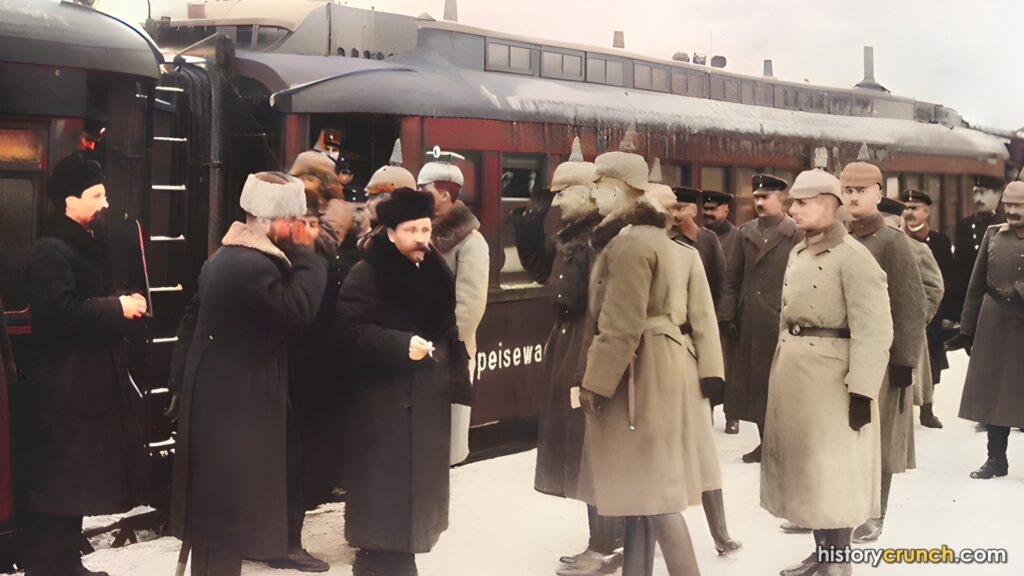The Treaty of Brest-Litovsk was a peace treaty signed on March 3rd, 1918, between Soviet Russia (represented by the Bolshevik government led by Vladimir Lenin) and the Central Powers during World War I. The treaty marked Russia’s exit from the war and had significant implications for the Eastern Front of the war.
Russia in World War I
World War I was a devastating conflict for Russia and had profound impacts on the country, including the fall of Tsar Nicholas II and the rise to power of the Bolsheviks. While not necessarily a direct cause of the revolution, Russia’s participation in World War I worsened the existing problems of the country. For example, the strain that the war had on the economy, coupled with inadequate resources and military failures, led to widespread anger among the Russian population. Morale among Russian soldiers was incredibly low, as Russia suffered terrible losses during its battles with Germany in the First World War. In fact, the February Revolution of 1917 was, in part, a response to the deteriorating conditions and the loss of confidence in the tsarist regime’s ability to address the challenges posed by the conflict.
As such, the Bolsheviks, who came to power in Russia after the October Revolution of 1917, were committed to ending Russia’s involvement in World War I. The war had been extremely costly for the country in terms of lives lost and economic resources. Furthermore, Vladimir Lenin promised to end Russia’s involvement in the war upon seizing power.

Main Parts of the Treaty of Brest-Litovsk
Peace negotiations took place at the city of Brest-Litovsk (now in modern-day Belarus) between Soviet Russia and the Central Powers, which included Germany, Austria-Hungary, Bulgaria, and the Ottoman Empire.
The terms of the Treaty of Brest-Litovsk were harsh for Russia. The treaty recognized the independence of Ukraine, Belarus, and the Baltic states (Estonia, Latvia, and Lithuania). Additionally, large portions of Russian territory, including Finland, the Caucasus region, and the western part of Russia itself, were ceded to the Central Powers. As a result, the treaty led to substantial territorial losses for Russia, amounting to about one-sixth of its population and agricultural resources. The surrendered territories were economically significant and included valuable farmland and industrial areas.
In addition to territorial losses, Russia also had to take some economic losses. The treaty required Russia to pay substantial reparations to the Central Powers and to give up a significant portion of its industrial infrastructure.

Significance of the Treaty of Brest-Litovsk
The Treaty of Brest-Litovsk effectively ended Russia’s participation in World War I on the Eastern Front. The Central Powers gained control over the surrendered territories, allowing them to focus their military efforts on the Western Front against the Allies. This was especially important for Germany, since it could now focus its forces on the Western Front and end its two-front war from the early years of World War I.
It was also significant to the Bolsheviks in Russia who used the Treaty of Brest-Litovsk as a means of strengthening their own power over the country. Russia was going through the events of the Russian Revolution and Russian Civil War, and the treaty allowed the Bolsheviks to gain a level of support from the Russian population due to meeting the promise of peace.




